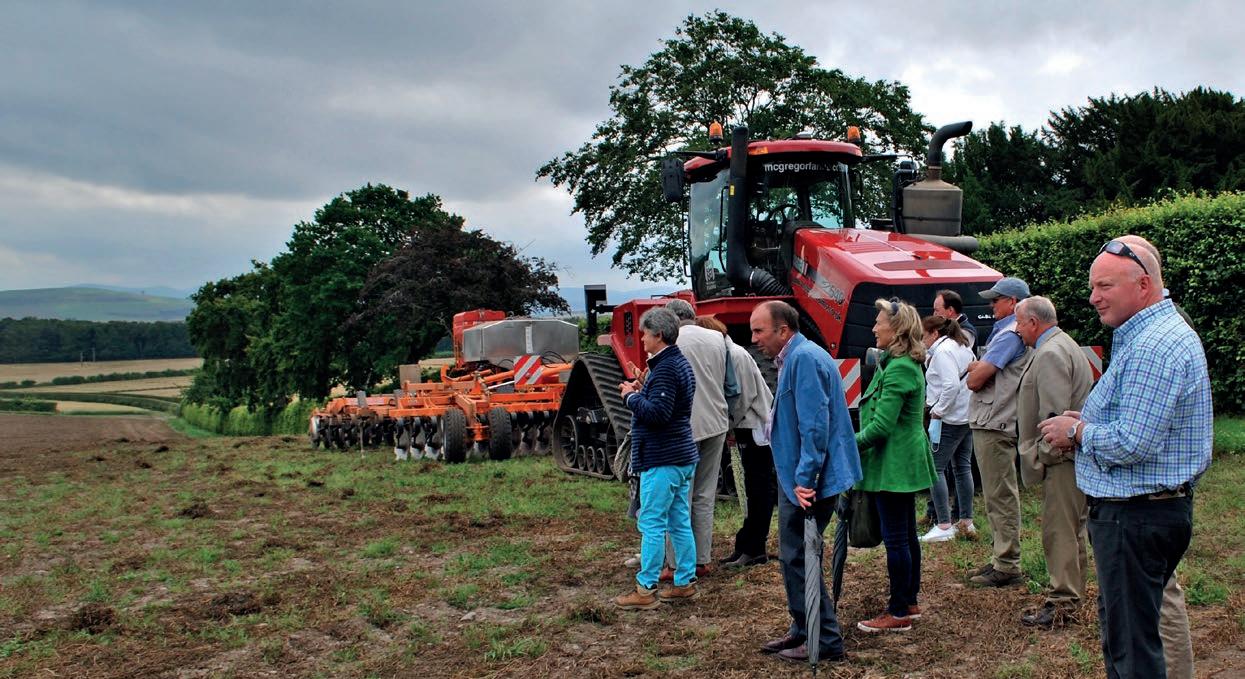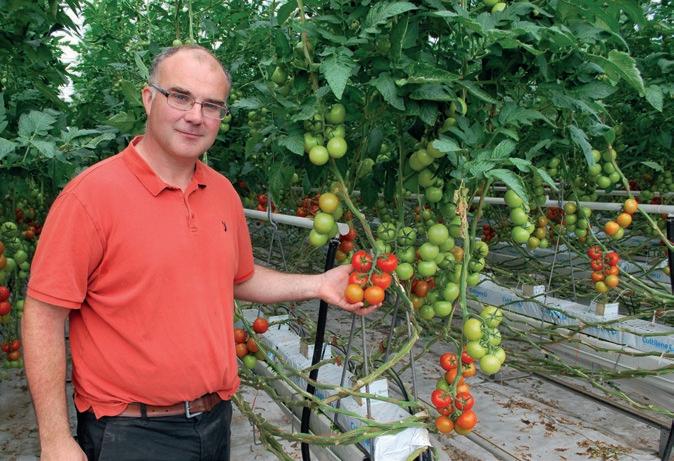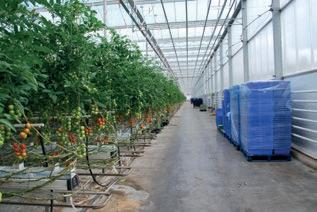
5 minute read
Farming Focus
Borders does it best
Investing in innovation and efficiency were recurring themes on the Chairman’s Tour of the Borders region of Scotland. Charles Abel reports
FARMING EFFICIENCY

MOBILE phones, modern machinery and precision farming transformed arable farming, says Colin McGregor. Now McGregor Farms delivers an exceptional contract farming operation across almost 3500ha (8500 acres) of the fertile Tweed Valley.
What Vaderstad’s drill started, by raising daily outputs from 40 to 100 acres a day, today Claas Lexion combines have continued, with a flexible 42ft belt-fed header raising output by 20% and 30% in wheat and oilseed rape respectively.
At £435,000 each they must earn their way, which McGregor farms ensures they do. The dedicated team includes CFA-standard accountancy, delivered by wife Jill, and in-house agronomy.
“With no scope for diversification we have to rely on pure farming, and contract farming is our diversification,” says Colin. Key to retaining 15 agreements is a reputation built on trust. “Economics is the driver, not politics, Brexit or anything else. And we’re looking after somebody else’s asset, so we’ve got to get it right.”
A life-changing Worshipful Company of Farmers course in 2001 triggered the business expansion, with arable technical manager David Fuller joining from Yorkshire’s JSR Farming in 2008.
Annual rainfall of 686mm (27 inches) and increasingly extreme weather means weather windows must be fully exploited. Investment in infrastructure includes a 4000t potato cold store and 10,000t grain store. People are invested in too, to retain a stable team. And the best possible innovation is captured through up-todate machinery. “Depreciation is our biggest cost, but without the kit we couldn’t do the job. We’re investing in the ability to work shorter and shorter weather windows,” Colin says.
This September’s drilling goal was 1000 acres/ four days. That’s do-able with multiple Quad-tracs and high output drills on a 12m Controlled Traffic Farming system to cut fuel use, limit soil damage and raise yields.
If precision farming is going to work anywhere it will work here, with Tweed valley soils varying hugely, both within and between fields. McGregor Farms has been mapping since 1996, with electrical conductivity mapping now offering even more opportunity.
Variable rate seed, backed by variable rate P, K, lime and N-sensor guided nitrogen applications, ensures crops hit optimum populations with eyewatering evenness, despite what lies beneath. “It’s a slow burn, but over a long period of time it works, and it gets us up the learning curve on new farms faster too,” says Colin.
Technology should help with the worrying decline in crop protection options too. The 36m Agrifac Condor self-propelled sprayers have individual nozzle control to prevent overlaps, electro-charging pattern control and “green on brown” computer-aided targeting of weeds on bare land, and “green on green” targeting of weeds in crops a real prospect. “It’s expensive technology, but the savings are there,” says Colin.
You’d back McGregor Farms against any farm anywhere in the world to extract the best efficiency gains – truly inspiring.
TOMATO TRIUMPH
MANAGING a complex enterprise harvesting energy from cow muck and biomass for the national grid and a 4-acre glasshouse growing succulent tomatoes in rural Scotland is no mean feat.
But for Jim Shanks it continues five generations of investing in innovation at Standhill Farm, including a cheese-making venture by his parents, and a nascent tomato wine enterprise by wife Kerry.
Tweaks to optimise output have been key, especially with the Borders receiving 30% less light per year than south coast competitors, and each 1% of reduced sunlight translating into 1% less yield.
Slurry from the year-round housed Holstein dairy herd feeds an anaerobic digester to generate renewable electricity, with surplus heat drying woodchip for boilers to deliver glasshouse heat and year-round RHI and FiT payments.
Methane output is enhanced by adding 3000t of crop to the 7000t of slurry. Producing milk for Tesco now takes a disproportionate amount of time. “The slurry is as valuable as the milk, it’s certainly making as much money,” says Jim.
CO2 from the biogas is supplemented with bought-in bottled gas, its greater purity helping drive tomato output. Similarly, diffuse glass ensures better light transmission into the lower crop canopy. And lower temperatures in the Borders allow night-time crop stressing to stimulate flowering.
The sophisticated growing system, using precisely fed plants grown in rockwool to up to 45ft in length in a season, produces vine and cherry tomatoes for Morrisons and Asda. All staff are local – quite a triumph in UK ag currently.
The net result? Standhill crop output matches southern competitors. It’s working so well Jim is tempted to invest in another glasshouse. But where to put it in this tight Borders valley. Be assured, if it can be done Jim will find a way of doing it. KEEP agribusiness innovation in private hands, suggests Angus Armstrong Chief Executive of Produce Investments, after the firm’s 8-year spell with LSE AIM listing revealed the City’s aversion to rain, drought, retail supply and volatile short-term returns. The group supplies 150,000t/year of potatoes as Greenvale, exports seed to N Africa and provides Crop4Sight digital agronomy and novel ethylene-based storage solution Restrain. It also supplies 20,000t/year of PDO Jersey Royals, 23million daffodil bunches (worth £1 each in the UK, but €1.99 in Europe), 80 acres of daffodils to produce Alzheimer-slowing drug galantamine and 10 acres of Jersey Fine Tea. An impressive diversified agri-business.



ROXBURGHE ESTATES
THIS thriving 54,000 acre commercial estate includes Tweed-side fishing, a sensitively managed 9,500 acre grouse moor, conservation projects for mountain hare, black grouse and wild grey partridge, 16 hill farms averaging 1500 acres each, and a wind farm powering 80,000 homes. With an eye to farming’s long-term future the estate has in-hand and tenanted farms producing prime Scottish beef and lamb, malting barley, oats, potatoes and more from the grassy slopes of the Cheviots to the heather-clad Lammermuirs, with the fertile Tweed valley between. Gillon Bloodstock is going from strength to strength.










